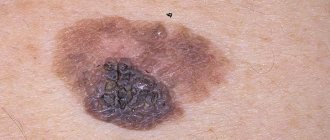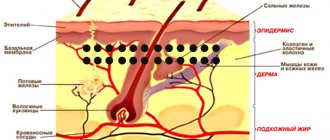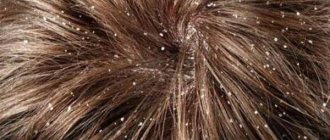- about the author
- VK profile
Svetlana Tarasova
Hairdresser-stylist with more than 8 years of experience, expert in the field of haircuts, styling, hair care, coloring.
Many people associate dandruff with problems with the skin under the scalp, but this is not entirely true. Seborrhea occurs on the eyebrows, ears, armpits, etc., because these areas are also covered with skin with sebaceous glands and small hair.
Causes of dandruff in the ears
The skin and sebaceous glands on the ears, secreting excess oil, provoke dandruff. The root of the problem is the fungus Pityrosporum. With increased oily skin, it begins to actively multiply. This fungus is always present in the natural microflora, but it is activated and affects the epidermis when the immune system is suppressed.
Provoking factors:
- insufficient or lack of ear hygiene;
- lack of vitamins and minerals in the diet;
- hormonal imbalance during pregnancy, menopause;
- metabolic disorders;
- hereditary predisposition;
- dry ears;
- previous otitis media or furunculosis;
- liver or digestive tract diseases;
- reaction to low-quality shampoo or soap.
Lack of hygiene is the main reason. In unwashed ears, the pores become clogged with oil, causing crusts to appear.
An unbalanced diet is the second reason. The appearance of dandruff is provoked by soda and fast foods, spicy, fatty and fried foods, large gaps between meals, vitamin deficiency, and dry snacks.
In addition, women are more susceptible to seborrhea due to frequent fluctuations in hormones.
Carrying out diagnostics
Before carrying out treatment, it is important to determine exactly why crusts form in the ears, and for this you need to carry out a comprehensive diagnosis. Diagnostic techniques largely depend on the existing symptoms, as well as the severity of the pathological process.
First of all, the doctor conducts a visual examination of the auricle and ear canal, based on which he makes a preliminary conclusion. If the doctor can make a diagnosis immediately, then additional examination is not required. Quickly diagnosed diseases include seborrhea, eczema, and dermatitis. Basically, when they occur, dry crusts form in the ears, photos of which accurately show the peculiarity of the pathology.
In all other cases, especially if otitis media or fungus is suspected, a series of laboratory and instrumental studies must be carried out to make an accurate diagnosis. To determine the presence of pathogenic microorganisms, urine and blood tests are prescribed. To determine the nature of the origin and composition of the crusts, scraping is carried out. Bacterial culture helps determine the nature of the bacteria. If there is inflammation of the inner ear, radiography is prescribed. If a malignant tumor is suspected, a computed tomography scan is required.
Symptoms of the disease and what dandruff in the ears looks like
Translated from Latin, “dandruff” means “bran”. This is explained by the fact that the separated skin particles (exfoliated epidermal cells) are similar in appearance to them.
Medicine interprets the concept of dandruff as the acceleration of the exfoliation of small particles of skin. This phenomenon can occur anywhere there is hair.
Ear dandruff affects not only the auricle, but also the area behind the ears and the ear canal. Some patients, when faced with such flakes, believe that it is dandruff falling from the hair and continue to use their antiseborrheic shampoos.
Normally, the skin is renewed within about a month. If the secretion of the sebaceous glands is not enough or, conversely, too much, dandruff will appear in any case. If the process is accelerated, dermatocytes do not have time to mature, forming flakes on the surface of the skin.
Ear dandruff appears against the background of seborrhea of the head if it is not treated. Both phenomena are similar in origin. Dandruff is very similar to flaking of the skin, but the latter is never accompanied by itching and affects limited areas.
Whitish scales form over large areas; if they are removed (and they are difficult to separate), the skin underneath is always red and irritated.
Many people report discomfort due to dandruff in the ears. If it occurs after otitis media, it will be accompanied by hearing loss and congestion.
Dandruff can resemble yellowish sebaceous crusts - seborrheic dermatitis on the ears is always dry and greasy. At the same time, the plates of scales are denser, thicker and more pronounced. The scales themselves are covered with an oily film. Itching remains the main symptom of any type of seborrhea.
Diagnosis of seborrhea
Dermatologists or trichologists (scalp treatment specialists) distinguish 3 types of seborrheic dermatitis.
- Dry seborrhea, characterized by decreased sebum secretion. In this case, dandruff flakes are small and easily separated from the scalp; usually the foci are localized in the parietal and frontal parts of the head.
- Oily seborrhea, on the contrary, occurs with increased sebum secretion. The scales in this case are larger in size and are difficult to separate from the skin. Hair looks greasy. Oily seborrhea can lead to blackheads (comedones), atheromas (plugs of sebaceous glands), which, when inflamed, can cause severe pain.
- Mixed seborrhea is characterized by spreading to the skin of the face. Typically, in this case, the area of the forehead, nose and chin is oily, and the skin on the cheeks is dry. In the frontal and parietal regions, sebum secretion processes occur very actively, while in the rest of the head they are reduced. As a rule, in this case, the hair in the frontal-parietal and temporal regions quickly becomes greasy, and in other areas it looks dry.
“Irrational scalp care also leads to seborrheic dermatitis.”
Treatment
The problem should not be ignored - seborrheic dermatitis can result in such serious complications as boils, abscesses and baldness. Special antiseborrheic products are sold in pharmacies, not in supermarkets or perfume stores! Therapeutic shampoos are those that have proven antifungal activity, acting specifically on the cause of the problem, and not just washing away dandruff particles from the skin. Fungicidal (antifungal) include, for example, ketocanazole, an active ingredient. If you follow the regimen, it will take only 2 weeks to get rid of dandruff.
How to remove dandruff from ears
Leaving dead particles of epidermis in the ears is, at a minimum, unhygienic, so you need to wash your ears and clean them in the morning and evening. In order not to injure the skin, hard scales and crusts are first softened. For this purpose, a cotton swab dipped in oil or herbal decoction is quite suitable. Any vegetable oil will do: olive, lean, burdock, corn.
A tampon with oil or decoction must be squeezed out thoroughly. It is laid for about 15 minutes - during this time the crusts will have time to soften. Next, it will only take a few minutes to clean your ears with cotton swabs. Afterwards the surface is cleaned with a napkin. It is advisable to repeat the procedure at least 3 times a day.
Important! It is necessary to remove dandruff carefully, and only with means prescribed by a doctor. Any soap, shampoo or cleanser can worsen the situation; it is better to forget about them during the treatment period.
Main symptoms
Yellow and white crusts in the ears are not considered a disease, but merely signal an existing pathology. To make an accurate diagnosis, you need to conduct a thorough examination and determine what other symptoms of the disorder there are. The most common signs observed in the presence of crust in the ears are:
- severe itching – with fungal infections;
- redness – always present in the presence of a crust;
- discharge from the ear is characteristic of otitis, eczema, prickly heat;
- pain – accompanies the inflammatory process;
- increased temperature - occurs with purulent otitis.
Symptoms largely depend on the nature of the pathology and the severity of its course. Almost all otitis media are accompanied by headaches, pain inside the ear, and fever. Fungal infections are characterized by itching, which is constantly present. All attempts to scratch inside the ear lead to microtraumas and aggravation of the pathological process, which is also expressed in the formation of crusts.
Dermatitis and eczema have the ability to affect large areas. Therefore, not only the ear canal, but also the entire auricle becomes the area of crusting and peeling.
When otitis media occurs, causing the formation of a crust in a person’s ears, symptoms such as:
- constant or periodic itching in the ear;
- headache;
- formation of sulfur plug;
- irritation or increased sensitivity of the ear.
In addition, there may be hearing loss and a feeling of fullness in the ears. This symptom is especially pronounced in mycotic otitis media. If the disease is localized in the outer ear, then plugs and crusts form in it, and liquid discharge also appears. Itching may occur in the area behind the ear.
What treatment is needed
Treatment of seborrhea begins with identifying the causes of its occurrence. Therapeutic methods involve working in 2 directions:
- Elimination of the traumatic cause - prescribing antifungal agents, eliminating other causative pathologies, for example, hormonal or endocrine disorders, changing lifestyle.
- Relief of symptoms.
The effectiveness of treatment is achieved by an integrated approach, which includes:
- strengthening immunity;
- change in diet;
- eliminating stress;
- local impact.
What to do if you suspect fungal otitis media?
First of all, immediately contact a specialized ENT clinic or ENT office. In Moscow, for example, at ENT clinic number 1, where an otorhinolaryngologist will conduct an endoscopic examination of the ear, to clarify the diagnosis, take discharge from the ear (smear) for fungi and prescribe complex therapy for this disease, which includes local therapy, general therapy and physical therapy.
One of the important elements of treatment is washing the ear canal with a medicinal solution in order to remove fungal mycelium and inflammatory discharge, after which ointment or drops that have a therapeutic effect are introduced onto the turunda, it is necessary for the medicine to act on the cleaned ear canal.
Red laser laser therapy is very effective for antifungal, anti-inflammatory and immune-modeling effects. The course of such treatment is 8-10 procedures.
After a course of complex therapy, it is recommended to give up the bad habit of “cleaning” your ears in order to allow earwax to protect you from such diseases in the future.
Traditional treatment
Dandruff does not threaten general health, but it does cause aesthetic discomfort to a person. Sometimes the patient tries to cover his ears with his hair, feeling inferior. In addition, the sight of affected ears evokes mixed feelings among ordinary people - they consider such a person to be contagious.
Of course, dandruff is not contagious, but it requires constant ear care. If there is insufficient hygiene, crusts mix with earwax, forming cerumen plugs. This may cause noise or hearing loss.
Traditional treatment involves the use of antifungal agents, the choice is huge:
- Tar-based - for example, Friederm, tar ointment, etc. They soften dead skin, destroy fungus, and also normalize the functioning of the sebaceous glands.
- Based on zinc and salicylic acid (paste and ointment) – perfectly destroy fungal infections.
- Antimycotics – Ketoconazole, Clotrimazole. They destroy the fungus by damaging its cell membrane. Perhotal cream or ointment - its active ingredient is Ketoconazole. Apply once a day to the affected area and surrounding area - approximately 2 cm around the crusts. Candibiotic ear drops - contain Clotrimazole for fungi and Levomycetin for bacteria. You can use it to treat the skin externally or moisten a tampon in it and place it in the ear canal (if the crusts are inside the ear).
- Preparations with selenium sulfide (for example, Sulsen) destroy fungus and normalize the rate of skin cell renewal. In the USA they abandoned it because it increases the oiliness of the skin (latest data).
- Products based on ciclopirox – very effective as they eliminate fungal microflora.
- Lotion Bifon – directly destroys the fungus Pityrosporum Ovale, which is the main cause of dandruff. Restores the lost balance of the scalp, relieves itching. The product contains the antifungal Bifonazole, also contains panthenol, which moisturizes the skin, and the anti-inflammatory component allantoin. Wipe the damaged epidermis with lotion 2-3 times a day.
Important! The use of antifungal agents is necessary to eliminate the cause of the disease, otherwise dandruff will return again and again.
Why does dandruff appear in large flakes?
Due to insufficient or excessive work of the sebaceous glands, the scalp begins to peel off. The scales peel off and fall off in flakes or dust.
Dandruff can be dry or oily. With dry dandruff, the sebaceous glands work poorly; they do not secrete enough secretion for the normal functioning of the skin. The secretion becomes too viscous, it does not come out of the sebaceous duct and clogs it. An inflammatory process occurs that develops into a disease – seborrheic dermatitis.
With oily dandruff, on the contrary, the sebaceous glands work too intensely. A lot of secretion is released, it spreads over the scalp. If it is thick, it clogs the ducts. And if it is liquid, it covers the entire skin, closing the follicles and pores, preventing the skin from breathing. Because of this, inflammation and pustules form. The skin tries to cope with this condition, renews itself, exfoliates. The scales come off in different ways - as fine dust or large flakes. If dead skin particles do not have time to exfoliate, they accumulate into flakes.
Diet and lifestyle correction
Proper nutrition plays a huge role in the treatment of seborrhea; it can normalize impaired secretion of the sebaceous glands. First of all, you should avoid eating fatty, sweet, salty, smoked and fried foods.
Fresh vegetables and fruits, fish, chicken, and cereals are recommended for consumption. Adequate water consumption is also important - 1.5 liters per day.
Multivitamin complexes are recommended - Vitrum, Duovit, Multi-Tabs, Supradin, Sanasol.
If prescribing medications is the prerogative of a doctor, then the patient can make the necessary changes in lifestyle independently:
- Increasing the body's defenses. Often it is suppressed immunity that becomes the trigger for the development of dandruff. To increase it, it is recommended to have proper rest, engage in feasible physical sports, and take daily walks in the fresh air.
- Avoiding stressful situations. To increase stress resistance, sedatives can be prescribed: tincture of motherwort and peony, valerian, Novopassit, Sedavit, etc. They are taken in courses according to the instructions.
Crusts in a child's ear
A small amount of secretion is produced daily in a child's ear canal. Excess sulfur must be removed. Many parents are interested in how to properly care for their child’s ears in order to avoid various problems and crust formation.
There are many different symptoms that indicate the progression of a baby’s ear disease, namely: pain, unpleasant odor, peeling or redness of the skin. It is important to clean not only the ear, but also behind the ears, as the accumulation of dirt can lead to the development of many problems.
If yellow crusts have formed, this may be a sign of a disease such as scrofula. It refers to one of the manifestations of dermatitis. Among the main symptoms are the appearance of yellow crusts, flaking of the ears and itching. Underneath the scabs, the skin is smooth and moist. After some time, the rash may spread to the head and body. In addition, yellower crusts may appear for reasons such as:
- insufficient hygiene;
- allergy;
- infection with staphylococcus.
It is very important to immediately take your child to a dermatologist or allergist, who will prescribe the correct treatment.
Crusts in the ears can form due to otitis externa. This is a common disease in which an infection enters the external auditory canal. In this case, the ear swells, turns red, and translucent discharge appears. After a while, a crust forms on the surface. If the disease is mild, treatment is carried out using drops, lotions, and ointments.
Traditional methods
There are also traditional methods for treating dandruff at home. They are not harmful to health, since their composition is natural. But consultation with a doctor before use is required.
Traditional recipes:
- For treatment, various infusions are used: chamomile, nettle, calendula, rose hips, sea buckthorn, in which cotton pads are soaked. General recipe: 2 tbsp. dry herb or collection, pour a glass of boiling water and leave for 20 minutes. You can add a few drops of oil to the infusion. The entire surface of the ears is treated with the product 2 times a day.
- Oil tampons: roll thick turundas out of cotton wool and soak them in sunflower oil. The oil should be warm. You cannot wash it out of your ears with alcohol, vodka, soap or shampoo, only with a dry soft cloth.
- Wipe your ears with cotton wool soaked in novocaine 3 times a day. You need to repeat these steps for a week.
- Anti-dandruff mask: carefully grind one clove of garlic until smooth, add a pinch of soda and 5 ml of olive, corn or sunflower oil. Let the prepared mixture sit for 15 minutes and wipe your ears with it. The course of treatment with this remedy is 7 days.
Important! The effect of folk remedies has not been proven by medicine, therefore, the treatment of dandruff on the ears should include pharmaceutical preparations, carefully selected by a doctor for each specific patient.
Medications
If crusts appear in the ears, how to treat them largely depends on the provoking factor. Treatment for otitis should begin with eliminating the infection. To do this, you need to rinse your ears with a glycerin solution. You also need to stop taking antibacterial and hormonal agents. This will help increase the susceptibility of the pathogen to drugs and accelerate the antifungal effect. Drug therapy includes the use of ointments and instillation of solutions.
Doctors prescribe antifungal ear drops, compresses, lotions and rinses. They are used when it is necessary to eliminate pain, inflammation and destroy pathogenic microflora. For this purpose, Cefazolin, Candibiotic, and Clotrimazole are prescribed.
The duration of treatment is determined by the doctor. Drops can only be used if the inside of the ear is not damaged. Otherwise, you need to use lotions.
A painful type of fungus is ear candidiasis, the symptoms of which require solutions with the appropriate composition. The fungus can be eliminated using such agents as Econazole, Fluconazole, Natamycin. They can be prescribed in the form of ointments and solutions, using as recommended by a doctor.
If you follow all the doctor's recommendations, candidiasis can be completely eliminated, but only if it occurs at an early stage. For an advanced form of infection, systematic treatment with medications in tablet form will be required.
If the fungus is localized outside the ear, then external antifungal drugs are used. These include such as Exoderil, Lamisil, Nitrofungin, Clotrimazole. If the fungus is in the ears, then the ointment is applied after preliminary cleaning.
Preventing dandruff in the ears
Prevention of seborrhea in the ears includes:
- compliance with personal hygiene standards;
- daily ear washing;
- correct alternation of work and rest;
- normalization of nutrition;
- timely treatment of boils and otitis media;
- minimizing stress;
- correct selection of shampoo and timely washing of hair;
- preventing dry scalp.
Important! After a course of treatment, dandruff does not disappear immediately. Fungi are always stubborn. Treatment must continue for at least a month before results can be seen. In some cases, therapy may take a year or more.
Dandruff in the ears is completely curable and you should not be afraid of it. But, as elsewhere, the timeliness of started therapy is important. The main thing is to identify the exact cause of its appearance, after which it will not be difficult for the doctor to prescribe adequate treatment.
- about the author
- VK profile
Main types
The crust in the ear may vary depending on the type of pathogen and location. It can be caused by diseases such as:
- ear candidiasis;
- maringitis;
- psoriasis;
- seborrheic dermatitis;
- neurodermatitis;
- eczema.
Ear candidiasis occurs due to yeast infection. As a result of this, not only crusts appear in the ear canal, but also a characteristic odor. Such a lesion is localized on the middle and outer ear, as well as behind the auricle.
Maringitis or eardrum infections is a fungal process that can occur due to mechanical damage.
If crusts appear in the ears (photo below), this may be due to many skin diseases, each of which requires a special treatment method. One of these diseases is psoriasis. It is characterized by damage to the surface of the skin. Red nodules are formed on it, which are covered with white scales. Initially, the nodules are small and then become large, forming plaques.
Neurodermatitis is a skin disease that manifests itself as a rash and severe itching. Redness appears on the affected area and peeling begins. In the advanced stage, the skin darkens, blisters form on it, after which a dried crust remains.








